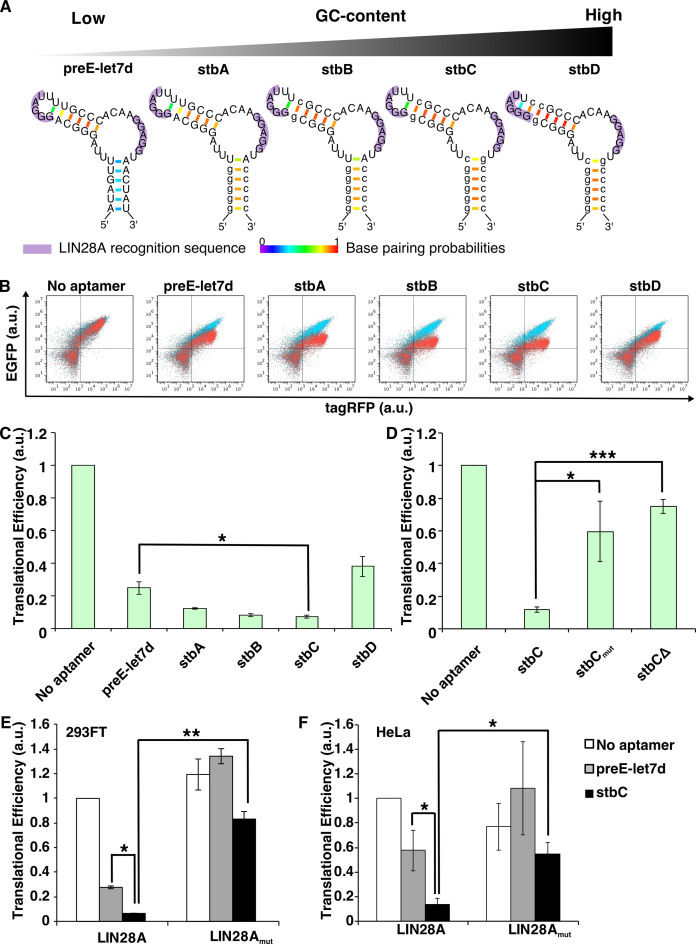Figure 4.
Construction of LIN28A-responsive devices. (A) Predicted secondary structures of the LIN28A aptamers used in this study. Small letters represent the nucleotides changed from the original preE-let7d sequence. Purple shadows represent the LIN28A recognition sequences. Color scale represents base pairing probabilities calculated by CentroidFold software. (B) Overlaid dot plots of the flow cytometry analysis. Red, cells co-transfected with EGFP reporter plasmid and trigger plasmid encoding LIN28A and tagRFP. Blue, cells co-transfected with EGFP reporter plasmid and control plasmid without LIN28A. (C) Translational efficiency of LIN28A-responsive devices. All values were normalized by cells transfected with a plasmid lacking aptamers (No aptamer). Transfection was performed in a 24-well format. Error bars represent mean ± SD (n = 3 independent experiments, each performed in triplicate). (D) Translational efficiency of defective LIN28A-responsive devices (sequences are described in Supplementary Figure S2). All values were normalized by cells transfected with No aptamer. Transfection was performed in a 96-well format. (E) Translational efficiency using mutant LIN28A (W46A, LIN28Amut), which weakens RNA binding. All values were normalized by cells co-transfected with No aptamer and trigger plasmid coding for wild-type LIN28A. Transfection was performed in a 24-well format. Error bars represent mean ± SD (n = 3 independent experiments, each performed in triplicate). (F) Translational efficiency of LIN28A-responsive devices in HeLa cells. Transfection was performed in a 24-well format. Error bars represent mean ± SD (n = 3 independent experiments, each performed in triplicate). All values were normalized as described in D. *P < 0.05, **P < 0.005, ***P < 0.0005 (Welch's t-test).

